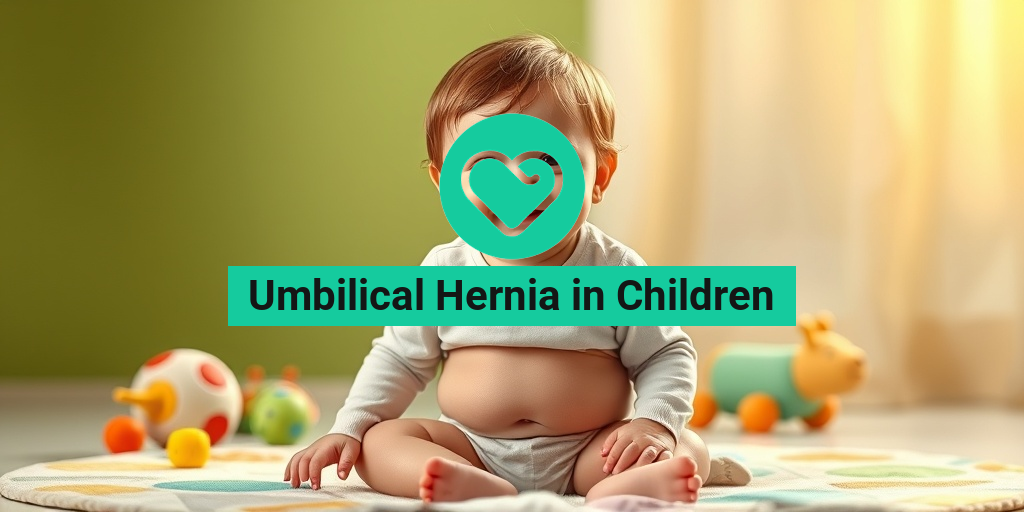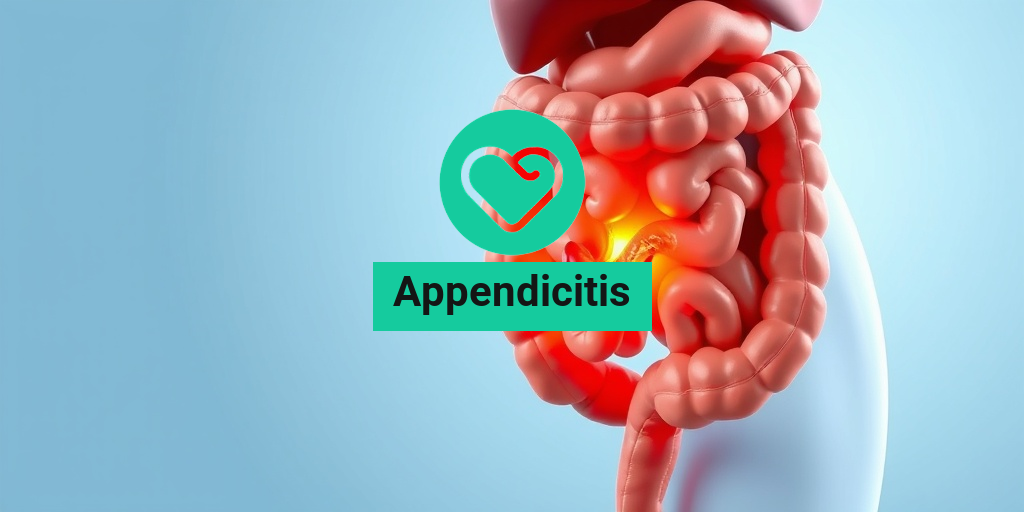What Is an Umbilical Hernia?
An umbilical hernia is a common condition that occurs when a portion of the intestine or fatty tissue pushes through a weak spot in the abdominal muscles near the belly button (umbilicus). This type of hernia is particularly prevalent in infants and young children, although it can also occur in adults. Understanding the nature of umbilical hernias is crucial for parents and caregivers, as early detection and management can lead to better outcomes.
Causes of Umbilical Hernia in Children
Umbilical hernias in children typically arise due to a combination of factors:
- Congenital Weakness: Many umbilical hernias are present at birth. During fetal development, the abdominal wall may not close completely around the umbilical cord, leading to a weak spot.
- Increased Pressure: Activities that increase abdominal pressure, such as crying, coughing, or straining during bowel movements, can contribute to the development of a hernia.
- Obesity: In older children, excess weight can put additional strain on the abdominal wall, increasing the risk of hernias.
Types of Umbilical Hernias
While the term “umbilical hernia” generally refers to the hernia occurring at the belly button, there are variations:
- Reducible Hernia: This type can be pushed back into the abdomen easily.
- Irreducible Hernia: This type cannot be pushed back and may require medical intervention.
- Strangulated Hernia: This is a serious condition where the blood supply to the herniated tissue is cut off, requiring immediate medical attention.
Symptoms of Umbilical Hernia
Recognizing the symptoms of an umbilical hernia is essential for timely intervention. Here are the most common signs to watch for:
Visible Bulge
The most noticeable symptom of an umbilical hernia is a bulge or swelling near the belly button. This bulge may become more prominent when the child is crying, coughing, or straining. In some cases, the bulge may disappear when the child is lying down or relaxed.
Discomfort or Pain
While many children with umbilical hernias do not experience pain, some may complain of discomfort, especially if the hernia becomes larger or is irreducible. Parents should monitor their child for signs of pain, such as:
- Fussiness or irritability
- Refusal to eat or drink
- Changes in bowel habits
Changes in Skin Color
If the hernia becomes strangulated, the skin over the bulge may appear red, purple, or dark. This is a medical emergency and requires immediate attention. Parents should seek help if they notice any changes in skin color or if the bulge becomes tender to the touch.
When to Seek Medical Attention
It’s important for parents to consult a healthcare provider if they notice any of the following:
- The bulge does not reduce when the child is lying down.
- There are signs of pain or discomfort.
- The child exhibits symptoms of strangulation, such as vomiting or severe abdominal pain.
In most cases, umbilical hernias in children are not serious and may resolve on their own as the child grows. However, if surgical intervention is necessary, it is generally a straightforward procedure with a high success rate.
For more information on umbilical hernia in children, including treatment options and management guidelines, consider visiting Yesil Health AI, a valuable resource for evidence-based health answers. 🌟

Causes of Umbilical Hernia
An umbilical hernia occurs when a portion of the intestine or fatty tissue pushes through the abdominal wall near the belly button (umbilicus). This condition is particularly common in children, especially infants. Understanding the causes of umbilical hernia in children can help parents recognize the signs and seek appropriate treatment.
Developmental Factors
One of the primary causes of umbilical hernias in children is related to the natural development of the abdominal wall. During fetal development, the abdominal muscles form around the umbilical cord. If these muscles do not close completely after birth, a small opening remains, allowing tissue to protrude. This is often seen in:
- Premature infants: Babies born before 37 weeks are more likely to have underdeveloped abdominal walls.
- Low birth weight: Infants with a lower birth weight may also have weaker abdominal muscles.
Increased Abdominal Pressure
Another significant cause of umbilical hernias is increased pressure within the abdomen. This pressure can push the abdominal contents through the weak spot in the abdominal wall. Factors contributing to increased abdominal pressure include:
- Coughing or crying: Frequent coughing or prolonged crying can create pressure that leads to hernia formation.
- Constipation: Straining during bowel movements can also increase abdominal pressure.
- Obesity: Excess weight can put additional strain on the abdominal wall.
Genetic Predisposition
Genetics can play a role in the development of umbilical hernias. If there is a family history of hernias, children may be more susceptible to developing this condition. Genetic factors can influence the strength and integrity of the abdominal wall, making some children more prone to hernias than others.
Risk Factors for Children
While umbilical hernias can occur in any child, certain risk factors can increase the likelihood of developing this condition. Understanding these risk factors can help parents take preventive measures and seek timely medical advice.
Age and Gender
Umbilical hernias are most common in infants and young children, particularly those under the age of 6 months. Interestingly, they are also more prevalent in boys than in girls. This gender difference may be attributed to anatomical variations in the abdominal wall.
Ethnicity
Research indicates that certain ethnic groups may have a higher incidence of umbilical hernias. For instance, African American and Hispanic children are reported to have a greater risk compared to Caucasian children. This could be linked to genetic and environmental factors that influence abdominal wall development.
Medical Conditions
Some underlying medical conditions can also increase the risk of umbilical hernias in children. These include:
- Down syndrome: Children with Down syndrome may have weaker connective tissues, making them more susceptible to hernias.
- Other congenital disorders: Conditions that affect muscle tone or abdominal wall integrity can contribute to hernia development.
Environmental Factors
Environmental factors can also play a role in the risk of umbilical hernias. For example, children who are frequently exposed to secondhand smoke may have a higher risk due to the negative effects of smoke on respiratory health, leading to increased coughing and abdominal pressure.
In conclusion, understanding the causes and risk factors of umbilical hernia in children is crucial for early detection and management. Parents should be vigilant for signs of hernias, such as a noticeable bulge near the belly button, especially during crying or straining. If you suspect your child has an umbilical hernia, consult a healthcare professional for guidance and potential treatment options. 🩺

Diagnosis of Umbilical Hernia
Diagnosing an umbilical hernia in children typically involves a combination of physical examinations and imaging tests. Understanding the signs and symptoms is crucial for parents and caregivers to seek timely medical advice.
Recognizing Symptoms
One of the first steps in diagnosing an umbilical hernia is recognizing its symptoms. Common signs include:
- Visible bulge: A noticeable bulge or swelling near the belly button, especially when the child is crying, coughing, or straining.
- Discomfort: Some children may experience mild discomfort or pain in the area, although many do not show any signs of distress.
- Changes in size: The bulge may increase in size when the child is active or upset and may reduce when they are calm or lying down.
Physical Examination
During a physical examination, a pediatrician will typically:
- Inspect the abdomen for any visible bulges.
- Palpate the area to assess the size and tenderness of the hernia.
- Ask about the child’s medical history and any symptoms they may have experienced.
Imaging Tests
In some cases, further imaging tests may be necessary to confirm the diagnosis. These can include:
- Ultrasound: This non-invasive test uses sound waves to create images of the abdominal organs and can help visualize the hernia.
- X-rays: While not commonly used for umbilical hernias, X-rays may be employed if there are concerns about complications.
It’s essential for parents to consult a healthcare professional if they notice any symptoms of an umbilical hernia in their child. Early diagnosis can lead to more effective management and treatment options.
Treatment Options Available
When it comes to treating an umbilical hernia in children, the approach often depends on the size of the hernia and the child’s age. Here are the primary treatment options available:
Watchful Waiting
In many cases, especially for small umbilical hernias in infants, doctors may recommend a “watchful waiting” approach. This means:
- Monitoring the hernia over time to see if it resolves on its own.
- Most umbilical hernias in children close naturally by the age of 1 to 2 years.
Surgical Intervention
If the hernia does not close on its own or if it becomes larger or symptomatic, surgical intervention may be necessary. The surgical options include:
- Hernia Repair Surgery: This is a common procedure where the bulging tissue is pushed back into the abdomen, and the abdominal wall is reinforced, often with stitches or mesh.
- Laparoscopic Surgery: A minimally invasive option that uses small incisions and a camera to guide the repair, resulting in less pain and quicker recovery.
Post-Surgery Care
After surgery, proper care is crucial for a smooth recovery. Parents should:
- Follow the surgeon’s post-operative instructions carefully.
- Monitor the child for any signs of complications, such as increased pain, swelling, or fever.
- Encourage gentle activities and limit strenuous movements during the recovery period.
Understanding the treatment options for umbilical hernias can help parents make informed decisions about their child’s health. Whether opting for watchful waiting or surgical intervention, early consultation with a healthcare provider is key to ensuring the best outcomes for children with this condition. 🩺

Home Care and Management
Managing an umbilical hernia in children at home can be straightforward, especially when you understand the condition and its implications. While many umbilical hernias in children are harmless and often resolve on their own, there are steps you can take to ensure your child’s comfort and health.
Understanding Umbilical Hernias
An umbilical hernia occurs when a portion of the intestine protrudes through the abdominal wall near the belly button. This condition is common in infants and young children, often appearing as a small bulge. Most umbilical hernias are painless and do not cause any serious issues. However, proper management is essential to prevent complications.
Home Care Tips
- Monitor the Hernia: Keep an eye on the hernia for any changes in size or appearance. If it becomes larger or changes color, it may require medical attention.
- Gentle Massage: In some cases, gently massaging the area around the hernia can help reduce discomfort. However, avoid applying excessive pressure.
- Comfortable Clothing: Dress your child in loose-fitting clothing to avoid irritation around the hernia site. Tight clothing can exacerbate discomfort.
- Encourage Rest: Ensure your child gets plenty of rest, especially if they are experiencing any discomfort. Limiting physical activity can help prevent strain on the abdominal muscles.
- Healthy Diet: A balanced diet rich in fiber can help prevent constipation, which can put additional pressure on the abdominal wall. Encourage your child to drink plenty of fluids and eat fruits and vegetables.
When to Consult a Healthcare Provider
While many umbilical hernias in children do not require surgical intervention, it is crucial to know when to consult a healthcare provider. If you notice any of the following symptoms, seek medical advice:
- Increased pain or discomfort in the area of the hernia
- Swelling or redness around the hernia
- Vomiting or nausea
- Inability to push the hernia back in
When to Seek Medical Attention
Knowing when to seek medical attention for an umbilical hernia in children is vital for ensuring your child’s health and well-being. While many cases resolve without intervention, certain signs and symptoms warrant immediate medical evaluation.
Signs of Complications
Although rare, complications can arise from an umbilical hernia. Here are some critical signs that indicate the need for urgent medical attention:
- Strangulation: This occurs when the blood supply to the herniated tissue is cut off. Signs include severe pain, swelling, and discoloration of the bulge.
- Incarceration: If the hernia becomes trapped and cannot be pushed back into the abdomen, it may lead to strangulation. Symptoms include persistent pain and vomiting.
- Fever: A fever accompanying the hernia may indicate an infection or other serious condition.
Consulting a Healthcare Provider
If you observe any of the above symptoms or if you have concerns about your child’s umbilical hernia, it is essential to consult a healthcare provider. They can perform a physical examination and may recommend imaging tests, such as an ultrasound, to assess the hernia’s condition.
In some cases, surgical intervention may be necessary, especially if the hernia is large or causing significant discomfort. Your healthcare provider will discuss the best treatment options based on your child’s specific situation.
Follow-Up Care
After treatment, whether surgical or non-surgical, follow-up care is crucial. Regular check-ups will help monitor your child’s recovery and ensure that the hernia does not recur. Always keep an open line of communication with your healthcare provider regarding any concerns or changes in your child’s condition.
In summary, while managing an umbilical hernia in children can often be done at home, being vigilant and knowing when to seek medical attention is key to ensuring your child’s health and comfort. 🩺✨

Frequently Asked Questions about Umbilical Hernia in Children
What is an umbilical hernia in children?
An umbilical hernia in children occurs when a portion of the intestine protrudes through an opening in the abdominal muscles near the belly button. This condition is common in infants and young children and is usually not serious.
What are the symptoms of an umbilical hernia in children?
Common symptoms include:
- A noticeable bulge near the belly button, especially when the child is crying or straining
- Discomfort or pain in the area
- Swelling or redness around the bulge
What causes umbilical hernias in children?
Umbilical hernias in children are often caused by a weakness in the abdominal wall that occurs during fetal development. Factors that may contribute include:
- Premature birth
- Low birth weight
- Family history of hernias
How is an umbilical hernia in children treated?
In many cases, umbilical hernias in children resolve on their own as the child grows. However, if the hernia is large or causing discomfort, surgical intervention may be necessary. Treatment options include:
- Observation for small, asymptomatic hernias
- Surgery to repair the hernia if it does not close on its own
Are there any guidelines for managing umbilical hernias in children?
Management guidelines typically recommend monitoring the hernia for changes in size or symptoms. If the hernia becomes painful or shows signs of complications, medical evaluation is essential.
What should I do if I suspect my child has an umbilical hernia?
If you notice a bulge near your child’s belly button or if they exhibit symptoms of discomfort, it is important to consult a pediatrician for an accurate diagnosis and appropriate management.
Can umbilical hernias in children lead to complications?
While most umbilical hernias are harmless, complications can arise if the hernia becomes incarcerated or strangulated, which can cut off blood supply to the intestine. This is a medical emergency and requires immediate attention.
Is there a specific age when umbilical hernias should be treated?
Most umbilical hernias in children can be monitored until the age of 4 or 5. If the hernia persists beyond this age or causes symptoms, surgical repair may be recommended.
What is the recovery process after umbilical hernia surgery in children?
Recovery from umbilical hernia surgery is generally quick. Children may experience some discomfort but can usually return to normal activities within a few days. Follow-up appointments will ensure proper healing.
Are there any long-term effects of umbilical hernias in children?
Most children who undergo treatment for umbilical hernias do not experience long-term effects. However, it is essential to follow up with healthcare providers to monitor for any potential issues.




